The future is here: Sixth-gen air dominance
How RTX is equipping the military airspace – for today’s fleet and tomorrow’s fight.
This article is brought to you by Soucy International Inc.
As armies boost their investments in robotic and autonomous systems (RAS), the benefits of composite rubber tracks (CRTs) are clear, according to manufacturer Soucy, ranging from soldier safety to maintenance demands.
RAS have become a significant presence in military thinking over recent decades, from unmanned ground vehicles (UGVs) to optionally manned vehicles. The sector is now a major focus for Soucy, whose CRTs are found in everything from the Tracked Hybrid Modular Infantry System (THeMIS) from Milrem Robotics to bids for the US Remote Combat Vehicle Light and Medium (RCV-L and RCV-M) platforms.
‘CRTs are faster, lighter and stronger’
— Kevin Sloan, Director of Business Development in Soucy’s Defence Rubber Track division
Such platforms benefit from CRTs in a number of areas, said Kevin Sloan, director of business development in Soucy’s Defense Rubber Track division and a 30-year veteran of the British Army’s Royal Armoured Corps. For example, Sloan said they provide operators with the ability to move at speed across all types of terrain.
Ripsaw™ M5 photos are being used with permission from Textron Systems.
With steel tracks, maintenance is a constant part of operational reality, Sloan said, with the need to replace links, sprockets, road wheels and other essential parts and components, perhaps as regularly as every 600 km. A CRT, by contrast, requires virtually no maintenance, because it is formed of one, high-endurance band.
This advantage is magnified for UGVs and other smaller RAS, which already have a relatively light weight; in some cases, operations can continue for up to 5,000 km, with no maintenance required on the band or the structural components of the system.
Themis Type X. Photo credit: Milrem Robotics
The other parts of the vehicle last longer, too, because the rubber track creates far less vibration. This is a crucial advantage. When compared to steel tracks, CRTs can reduce vibration by up to 75%, depending on the vehicle in question, a benefit that is particularly important for sensors and other on-board electronics, as Sloan explained.
‘The electronics can suffer. Circuit boards can suffer. Sighting systems and mission systems can suffer,’ he said. What’s more, onboard ammunition can even be degraded, Sloan warned, with expensive missiles rendered less efficient in their flight, for instance.
Another major advantage of CRTs is in ‘reach’, Sloan said. This is the ability to move a battlegroup or formation for thousands of km, ensuring they are able to immediately fight. That often involves travelling across hostile territory, Sloan noted, something that would pose obvious dangers if a vehicle had to stop for maintenance.
‘Composite rubber tracks take that away entirely,’ he explained. ‘You can travel 2,000 km to your area of operations and still have 3,000 km of track left to fight. You can then do a planned repair wherever you want.’
Ripsaw™ M5 photos are being used with permission from Textron Systems.
Rubber tracks provide a range of other operational advantages. Sloan singled out the tendency of steel tracks to make noise and ‘kick up dust’, explaining that in his army reconnaissance days he could ‘target battlegroups from 10 km away and call in artillery, just based on dust and sand and noise’.
CRTs greatly reduce these problems; they are far quieter than their steel equivalents, and because they are formed of one track, they do not feature the connectors that hold together the different segments of a steel track, which can disturb dust and sand.
‘The noise and vibration elements are a real sticking point for the health and safety of the soldier,’ Sloan said. ‘Composite rubber tracks reduce all of that.’
Additionally, CRTs can create fuel savings, Sloan said; the track is more efficient, he said, so ‘the engine isn’t working as hard to achieve the same outputs’.
Soucy has worked in defence CRTs for almost 30 years, combining its efforts with its expertise in sectors like agriculture and industry. While many UGVs have always used rubber tracks, they have not always been sufficiently robust, Sloan said. The company’s defence-specific CRT is designed to meet NATO STANAG blast protection at greater than Level 2, he said. Even at Level 3, damage to the rubber can be repaired, Sloan noted, while a soldier nearby or onboard a manned vehicle will still be protected from a secondary blast effect.
‘They’re not getting chunks of metal from a steel track flying in their direction like bullets,’ he said.
RAS means more than fully autonomous UGVs, Sloan noted, pointing to programmes like the US Army’s Optionally Manned Fighting Vehicle (OMFV). While the idea is still developing, one day battlegroups could be formed of vehicles with one or two crew members, perhaps tethered to an unmanned vehicle. This complexity and the range of potential vehicle combinations could increase logistic demands, Sloan said, with crews having to maintain a greater number of platforms.
‘The demand and requirements from our customers are constantly evolving, and we have to evolve with them,’ Sloan said. ‘If logistics and sustainment are problem areas for customers, then steel track will always be a problem – that’s where the composite rubber track is becoming more attractive, thanks to maintenance benefits, reduced spares requirements, reduced vibration, fuel savings, and much more.’
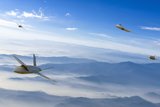
How RTX is equipping the military airspace – for today’s fleet and tomorrow’s fight.
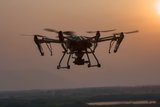
How strategic manufacturing partnership solves the industrialisation triad — Scale, Compliance and Cost — for hyper-growth defence tech innovators.
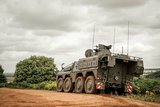
How does Britain ensure that we can preserve the lives of our soldiers and allies – now and in the future – with homegrown innovation and resilient domestic manufacturing? At Pearson Engineering, we are proud to be a central part of the answer to this increasingly important question.
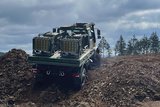
How Latvia is bolstering its territorial defences, industrial capacity and international cooperation with Dynamit Nobel Defence’s SKORPION2 Remote Mining System.

Barco’s story is one of constant evolution enabling more immersive, reliable, and future-ready training experiences.
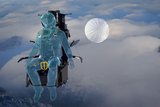
The ACES 5 ejection seat from RTX’s Collins Aerospace introduces new, innovative and patented technologies to help save lives.